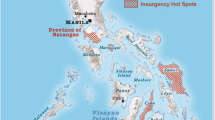Abstract
The purpose of this article is to present the archaeological evidence concerning the warfare in ancient Israel and to discuss problems which result from present politics and conflicts. After a short overview regarding conflicts in ancient times, efforts and difficulties of archaeology are brought up.
Résumé
Le but de cet article est de présenter les témoignages archéologiques de la guerre dans l’Israël antique et de discuter des problèmes qui résultent de la politique et des conflits actuels. Nous donnons d’abord un aperçu des conflits de l’antiquité, avant de présenter les efforts que déploie et les difficultés que rencontre l’archéologie.
Resumen
El propósito del presente artículo es presentar las evidencias arqueológicas relativas a la guerra en el antiguo Israel para debatir problemas que se derivan de la política y los conflictos actuales. Después de una breve descripción general relativa a los conflictos en los tiempos antiguos, se plantean los esfuerzos y las dificultades de la arqueología.















Similar content being viewed by others
References Cited
Avigad, N. (1983) Discovering Jerusalem, T. NelsonNashville.,
Breasted, J. H. (1906) Ancient Records of Egypt: Historical Documents from the Earliest Times to the Persian Conquest, The University of Chicago PressChicago.,
Dever, W.G., T.L. Thompson, G.W. Ahlström, and Phillip R. Davies 1995. Will the Real Israel Please Stand Up? Archaeology and Israelite Historiography Part I. BASOR 297: pp. 61-80.
Feldbacher, R. (2013) Die Kreuzzüge–Legitimation zur Gewalt seitens aller Kontrahenten. In Jahrbuch für Islamophobiefoschung 2013pp. 150–174, edited by F Hafez, New Academic PressVienna.,
Finkelstein, I., Silberman, N. A. (2001) The Bible Unearthed. Archaeology’s New Vision of Ancient Israel and the Origin of its Sacred Texts, Free PressLondon.,
Gabriel, R.A. 2003. The Military History of Ancient Israel. Praeger, Westport (Conn.).
Görg, M. (1997) Die Beziehungen zwischen dem Alten Israel und Ägypten. Von den Anfängen bis zum Exil, Wissenschaftliche BuchgesellschaftDarmstadt.,
Keel, O., Küchler, M., Uehlinger, C. (1984) Orte und Landschaften der Bibel 1: Geographisch-geschichtliche Landeskunde, Vandenhoeck & RuprechtEinsiedeln.,
Kitchen, K. A. (2003) On the Reliability of the Old Testament, Grand Rapids, EerdmansCambridge.,
Lohfink, N. (1992) Krieg und Staat im Alten Israel, Institut für Theologie und FriedenBarsbuettel.,
Mazar, A. (1990) Archaeology of the Land of the Bible, 10, 000–586 B.C.E., Anchor Bible Reference LibraryDoubleday, NY.,
Mazar, B. (1975) The Archaeological Excavations near the Temple Mount. In Jerusalem Revealed. Archaeology in the Holy City 1968–1974pp. 79–84, edited by Y Yadin, Yale University PressNew Haven.,
Oren, E. D. 1973. The overland route between Egypt and Canaan in the early Bronze Age. Israel Exploration Journal 23:198–205.
Oren, E. D. (1980) The Survey of North Sinai 1972–1982. In Qadmoniot Sinaipp. 101–150, edited by Z Mesheland I Finkelstein, Tel Aviv (Hebrew)Jerusalem.,
Oren, E. D. (1987) The “Ways of Horus” in North Sinai. In Egypt, Israel, Sinai: Archaeological and Historical Relationships in the Biblical Periodpp. 69–119, edited by AF Rainey, Tel Aviv UniversityTel Aviv.,
Pritchard, J. B. (ed.) 1969. Ancient Near Eastern Texts Relating to the Old Testament. Princeton University Press, Princeton.
Rainey, A. F. (2006) The Sacred Bridge—Carta’s Atlas of the Biblical World, CartaMichigan.,
Redford, D. B. (2003) The Wars in Syria and Palestine of Thutmose III. Culture and History of the Ancient Near East 16, Brill Academic PublishersLeiden.,
Rogerson, J. W., Davies, P. R. (2005) The Old Testament World, Westminster John Knox PressLouisville (Kentucky).,
Sitarz, E. (1983) Kulturen am Rande der Bibel: Sachbuch über Völker und Götter im Geschichtsfeld Israels, Katholisches BibelwerkStuttgart.,
Woudhuizen, F. C. (1992) The Language of the Sea Peoples, Najade PressAmsterdam.,
Bibliography
Ahituv, S. (1984) Canaanite Toponyms in Ancient Egyptian Documents, Magnes PressJerusalem.,
Dothan, T. K. 1982. The Philistines and Their Material Culture, Israel Exploration Society, Jerusalem.
Dothan, T. K., Moshe, M (1992) People of the Sea: The Search for the Philistines, ScribnerNew York.,
Drews, R. (1995) The End of the Bronze Age: Changes in Warfare and the Catastrophe of ca. 1200 B.C, Princeton University PressPrinceton (New Jersey).,
Hasel, M. G. (1998) Domination and Resistance: Egyptian Military Activity in the Southern Levant, ca. 1300–1185 B.C., Brill Academic PublishersLeiden.,
Junkkaala, E. (2006) Three Conquests of Canaan. A Comparative Study of Two Egyptian Campaigns and Joshua 10–12 in the Light of Recent Archaeological Evidence, Åbo Akademi University PressVaajakoski.,
Katzenstein, H. J. 1982. Gaza in Egyptian Texts in the New Kingdom. JAOS 102(1):111–113.
Katzenstein, H. J. 1983. Before Pharaoh Conquered Gaza. Jeremiah 47:1 33:249–251.
Namdar, D., Zukerman, A., Maeir, A. M., Katz, J. C., Cabanes, D., Trueman, C., Shahack-Gross, R., Weiner, 2011. The 9th Century BCE Destruction Layer at Tell es-Safi/Gath, Israel: Integrating Macro- and Microarchaeology. Journal of Archaeological Science 38(12):3471–3482.
Oren, A. 2009. Drafted Territories—The Creation of Israeli Army Hegemony over the State’s Land and its Expanses During its Early Years, 1948–1956. Givatayim (Hebrew).
Oren, A. (ed.) 2009. Space and Security—New Approach to the Use of Land Resources for Security and Military Needs, Bul. 11. Jerusalem (Hebrew).
Shifer, Z., Oren, A. 2008. On Land and National Security: Economic Aspects of the Control of Resources by the Defense Sector in Israel. The Economic Quarterly 55(03):387–409. (Hebrew).
Worschech, U. (1990) Die Beziehungen Moabs zu Israel und Ägypten in der Eisenzeit: siedlungsarchäologische und siedlungshistorische Untersuchungen im Kernland Moabs (Ard el-Kerak), ÄAT 18, Harrassowitz VerlagWiesbaden.,
Zerubavel, Y. (2003) Bar Kokhba’s Image in Modern Israeli Culture. In Bar Kokhba War Reconsidered: New Perspectives on the Second Jewish Revolt Against Rome (Texts and Studies in Ancient Judaism, 100)pp. 279–297, edited by P Schaefer, SiebeckTübingen.,




